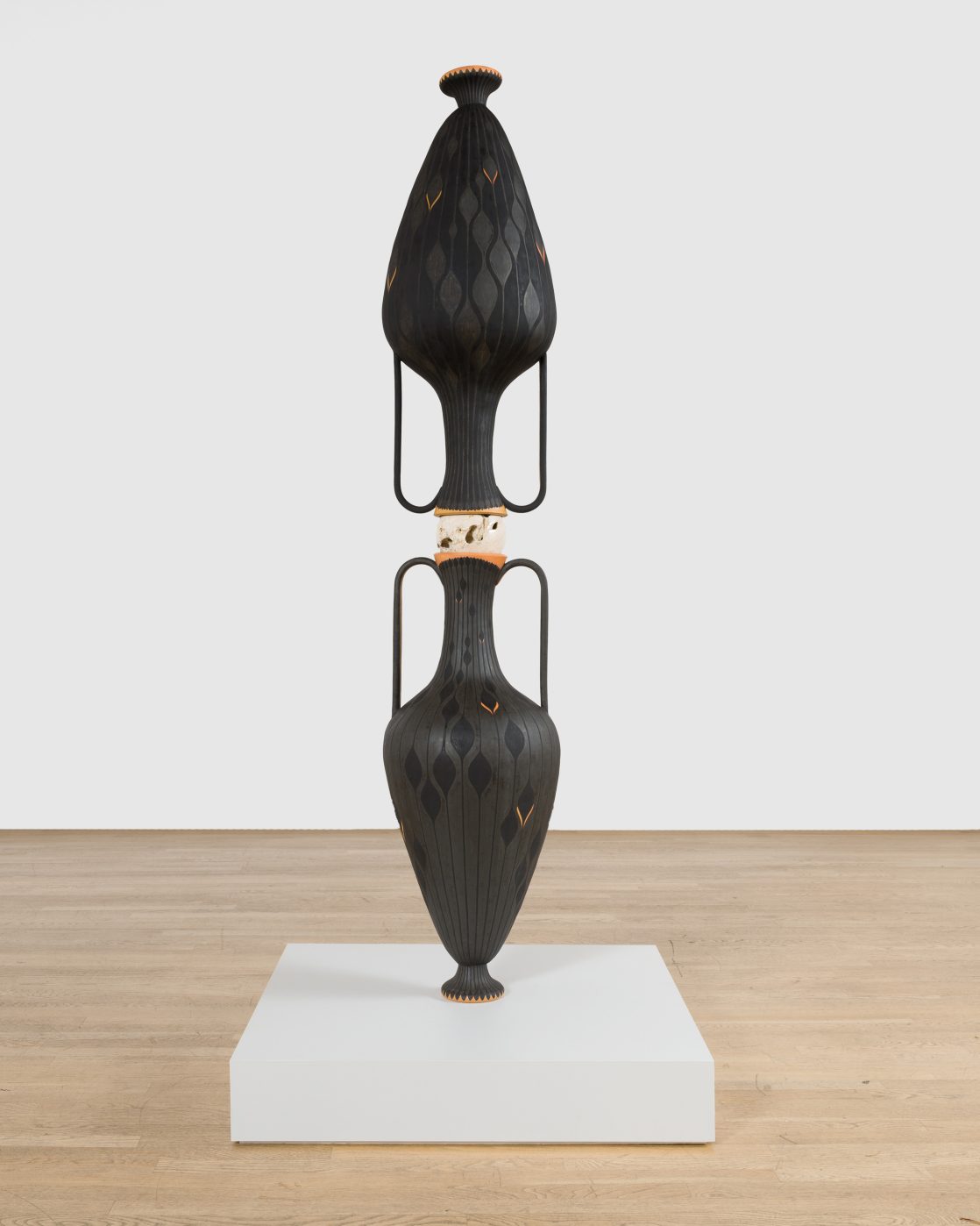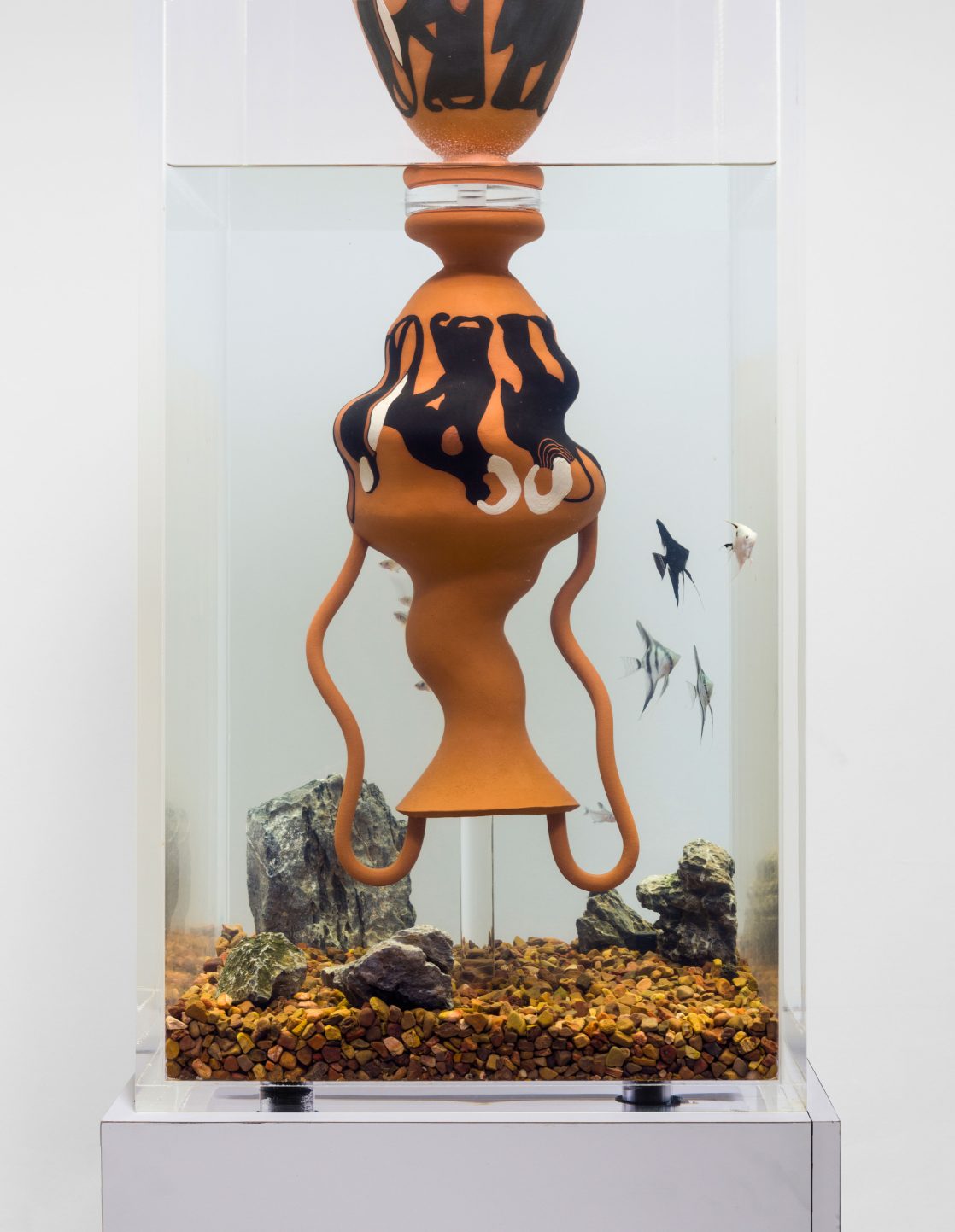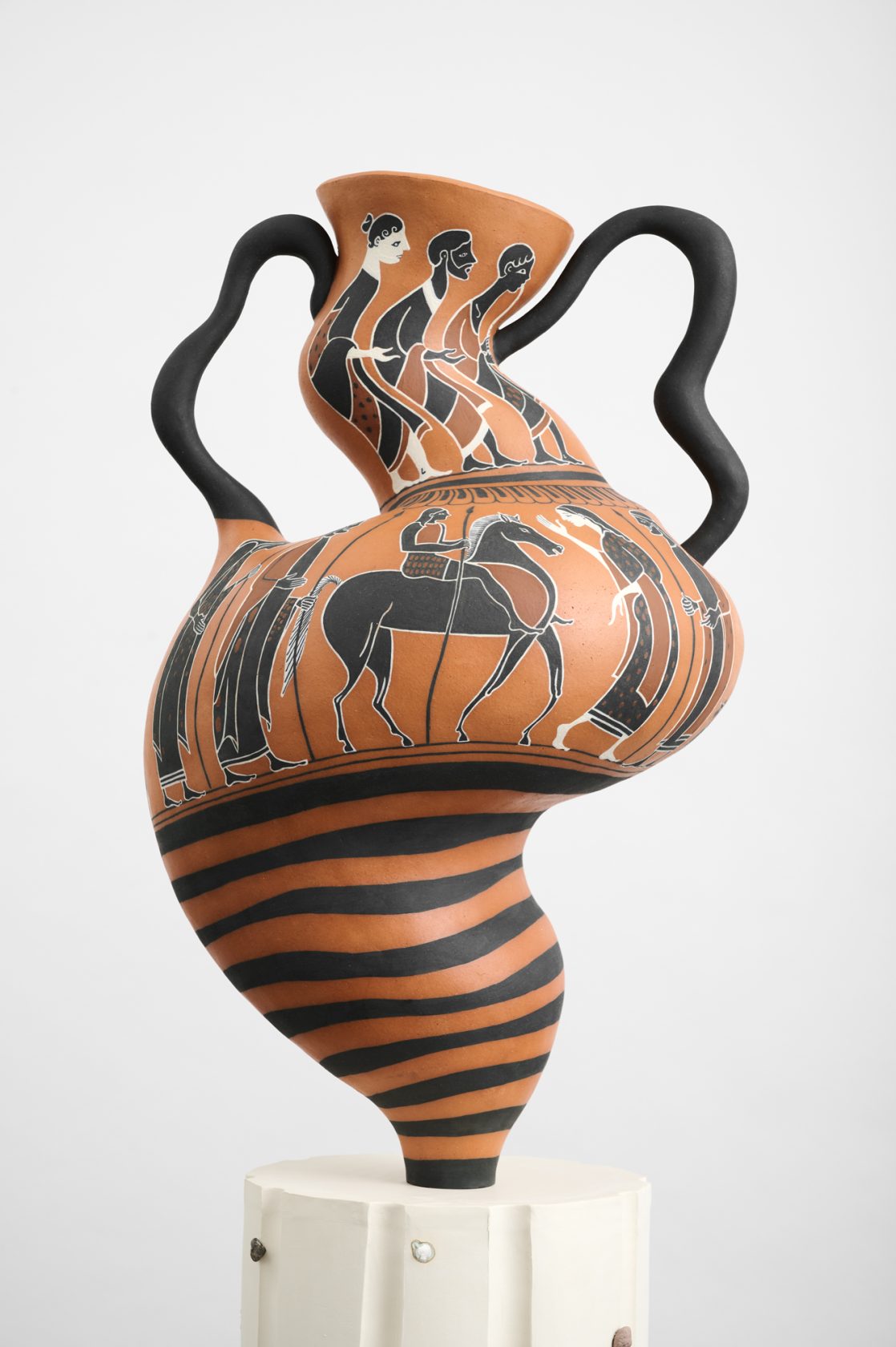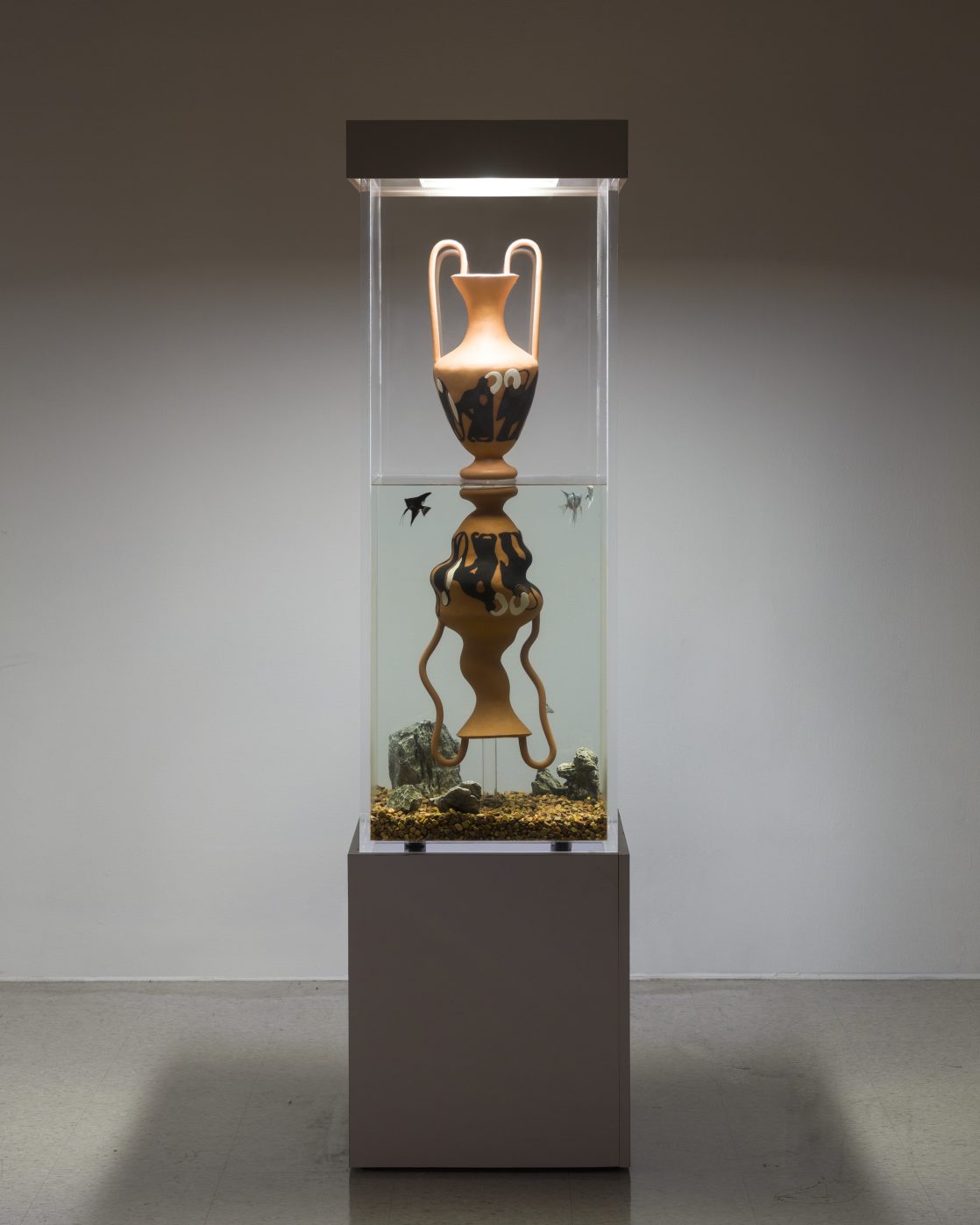Welcome to Ceramic Review
Ceramic Review is the magazine for contemporary and historical ceramics, ceramic art and pottery.
Ceramic Review Issue 333
May/June 2025
Ceramic Review is the magazine for contemporary and historical ceramics, ceramic art and pottery.
May/June 2025
Cammie Staros reimagines classical artefacts in clay, tracing the fractures of empire and the passage of time with pot-like sculptures.

My path to ceramics was not straightforward, but its twists and turns inform my work. With a background in art, semiotics, and a theory-heavy MFA, I focused on visual communication, inspired by a New Guinean language my linguist mother described – counting beyond fingers and toes to elbows, chins and cheeks. I explored bodily measurement, material fatigue and the corporeal rationales behind architectural norms in wood, glass, textiles and resin. Though my practice has evolved, emphasising physicality, institutional critique, and varied materials, I don’t see myself as a potter. While some pieces resemble pots, they are non-functional, with conceptual exploration at the core of my work.
Soon after getting my MFA, I discovered John Boardman’s Athenian Black Figure Vases. The book featured the kind of classical Greek ceramics that you might find in the British Museum or the Louvre. The vases were familiar and iconic and made me realise that art history itself is a non-verbal system of communication – one with which I had a promising relationship.
I came to think of these relics of my own Greek heritage as a kind of origin story of western art history. I was interested in exploring and complicating that narrative. I knew I wanted to make sculptures that related to those ideas without, at first, knowing what form they would take. It was clear, however, that I would need to start working in clay; a medium that had not even been offered to me at any school I attended.
Around the same time, I received my first residency at Anderson Ranch, an art foundation in Colorado known for its ceramics. Although I initially joined the sculpture programme, I moved into a more recognised department, and, with the help of the ranch’s ceramic faculty, I felt my way towards the working methods, techniques and materials that have become the backbone of my practice.
Knowing I wanted to make sculptures of pots rather than throw functional ones (and impatient with the learning curve of the latter), I opted for a handbuilt approach even when the works were mostly symmetrical. I use extruded coils and a lot of ribs to achieve the smooth surface I need for detailed painting. I limit that painting
to a prescribed pallet of the red and white of pure terra sigillata slip and the black that I mix, still using an adaptation of the recipe I learned at the ranch.
I was immediately drawn to the flatness of electric kilns. My sculptures are crisp, whole and evenly surfaced. They do not mimic the age of their referents but show signs of survival, as if melted, morphed or inhabited. I fire only once, although a little higher than a standard bisque (usually around 1080-1120°C), preferring a toastier hue.


When I began working with clay, I thought I was going to move through the historical trajectory a traditional class might take. I did not anticipate how profoundly working in a new medium would reshape my practice. More than a decade later, I am still referencing the same classical relics. They have become more poignant as symbols of the rise of empires and the fall of civilisations in the contemporary context of compounding political and ecological crises.
I want to use these antiquities and how we view them to question how our own moment will be remembered and what kind of world it will produce. To that end, I incorporate the language of museum displays to serve a double function: to highlight and complicate the institutionalisation of familiar historical narratives as well as attempt to fathom the unfathomable expanse of time.
I want to emphasise the distance (both in context and years) between ancient artefacts and their contemporary exhibition. I was able to explore these ideas in a show last year at the SCAD Museum of Art in Savannah, Georgia. We built several whole, partial and skeletal walls to wind through the exhibition, representing a collapse of the labyrinth of maze-like halls of so-called encyclopedic museums in Greek myths.
That show incorporated several series that I have worked on over the past few years. We included both earthenware amphorae and stone statuary that appear as if melted by fire or warped by time. On the walls and in cut-outs of the walls, we hung ceramic casts of ancient coins glazed to appear oxidized or rusted, connected into a chainmail with jewellery hardware and delicate, chain spiderwebs. Plexi pedestals and steel armatures supported pieces that I think of as half-vase and half-shell, as if caught in a moment of unlikely evolution or a visual analogy of things we leave behind. Anchoring the show were two museological vitrines of ceramics filled with water and life.
I started conceptualising my first aquarium-vitrine pieces after Trump’s first election when I, like many artists, wondered if my work was the most impactful, most important thing I could be doing. These pieces were one answer to that and were a turning point in my practice. I connected these fruits of fallen empires that I was already working with to the challenges of our present moment. But I also wanted to deal with those ideas without being prescriptive or expository.
I have an idea of a museum of antiquities that has been reclaimed by nature, but it is not clear how or why that might have happened. It took a few years, but in 2020,
I was awarded a Guggenheim Fellowship that allowed me to realise the first of those complicated pieces. For me, these works share space with modern anxieties but they also incorporate some of the beauty and distance of the natural world. In my work generally, but in these pieces in particular, I am using the familiar legacy of the classical world as a way to think about the broader legacy of our species on this planet.
For more details visit cammiestaros.com; @cammiestaros
